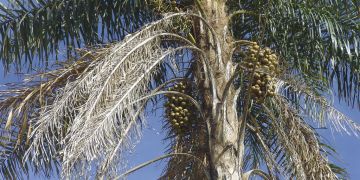Cultivation
The maca root can be found growing in the Andes Mountains, mainly in Peru. The environment which is deemed ideal for its growth is in uncongenial locations which are located high in the mountains. Maca flourishes in such climates due to its ability to thrive in spite of harsh temperatures and frost.
Maca is related to the mustard plant, and has similarities in appearance. The flowers of the maca resemble those of the mustard plant. It is not uncommon for farmers and /or those who are knowledgeable in horticulture to mistake the identity of either plant at first glance.
Medicinally, the part of the maca that holds the active nutrients is the flesh of its root. The nutritional contents of the maca root are impressive. The root or tuber is high in protein, natural sugars, iron, potassium, iodine, magnesium, calcium, and fiber. Due to maca’s high nutritional content, it is often referred to as having “superfood” properties.
Libido & Fertility
Culturally, the ancient Peruvians ingested this powerful root to boost the potency of the male libido. Its natural properties help to create an aphrodisiac-like response in men who have suffered from impotency, low sex-drive, and fertility problems. The maca root is known to improve the quality and quantity of sperm in men who have lower than normal sperm counts, which helps to increase the level of fertility.
Endurance
Athletically speaking, the main ingredients and naturally occurring substances in maca are becoming widely used by today’s amateur and professional athletes alike. The main action of this powerful superfood is to strengthen endurance and energy levels, which gives the athlete a natural advantage. Testosterone also seems to be increased as well.
Menopause
Over time, other uses for maca have also shown promising benefits to health such as relief of fatigue and the reduction of menopausal symptoms in women. One of the most troublesome symptoms of menopause is hot flashes. The active ingredients in the maca root appear to lessen the severity and frequency of hot flashes that occur due to hormonal changes in a woman’s body as they reach middle age. Maca root helps to bring back into balance the body’s natural hormone levels without the use of synthetic hormone replacements that are typical treatments for menopausal symptoms.
Menstruation
Menstrual problems that often plague women of child-bearing age such as cramping, heavy or irregular periods, as well as PMS, have found that the maca root alleviates many of the uncomfortable symptoms.
Skincare
For both men and women alike, skin problems such as acne have been drastically improved with the use of maca.
Depression
Another essential benefit of the maca root is its known ability to relieve mild depression. There is an increase in the body’s levels of serotonin in individuals using maca. Common treatments for depression are antidepressant medications which tend to have uncomfortable side effects such as weight gain, fatigue, and dulled senses. Maca has none of the side effects that are found in pharmaceutical antidepressants. In fact, the active ingredients in the maca root boost energy and lift depression naturally.
The benefits of the ancient Peruvian maca root continue through the present day as a leading superfood health enhancer. For those who have benefited from its health properties, maca comes highly recommended as a time-tested source of health.
Dosage
If being eaten as a food rather than capsules or powder, Maca really needs to be cooked first as it is very strong on the stomach lining otherwise and can cause severe digestive upset.
Maca generally comes in capsule or powder form. The strength of the active ingredients in maca varies, yet the typical dosage is 500mg twice daily. The powdered maca preparation is usually taken as one tablespoon per day.





